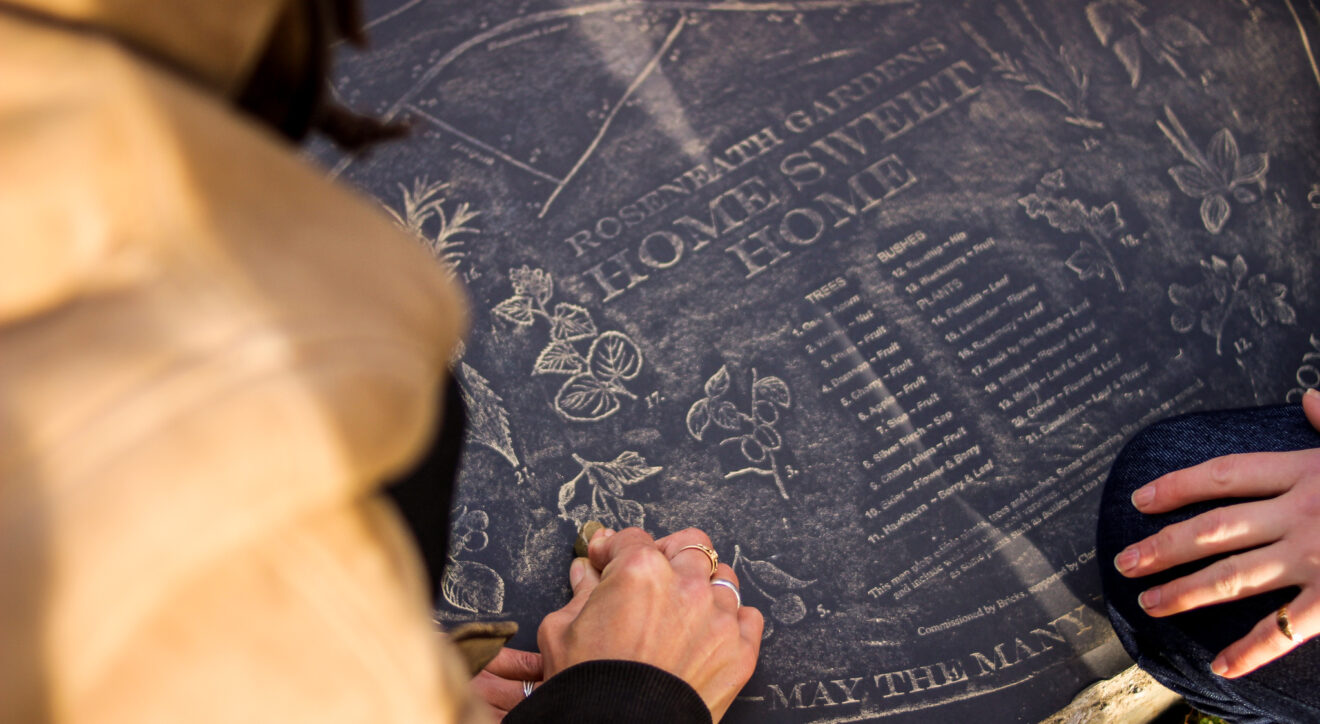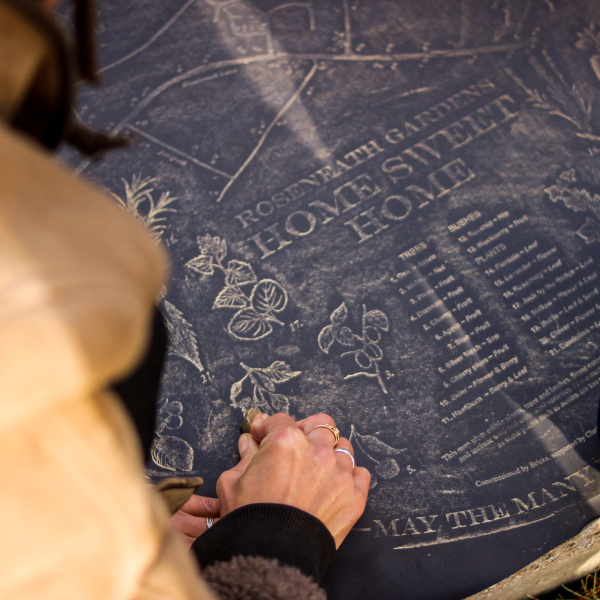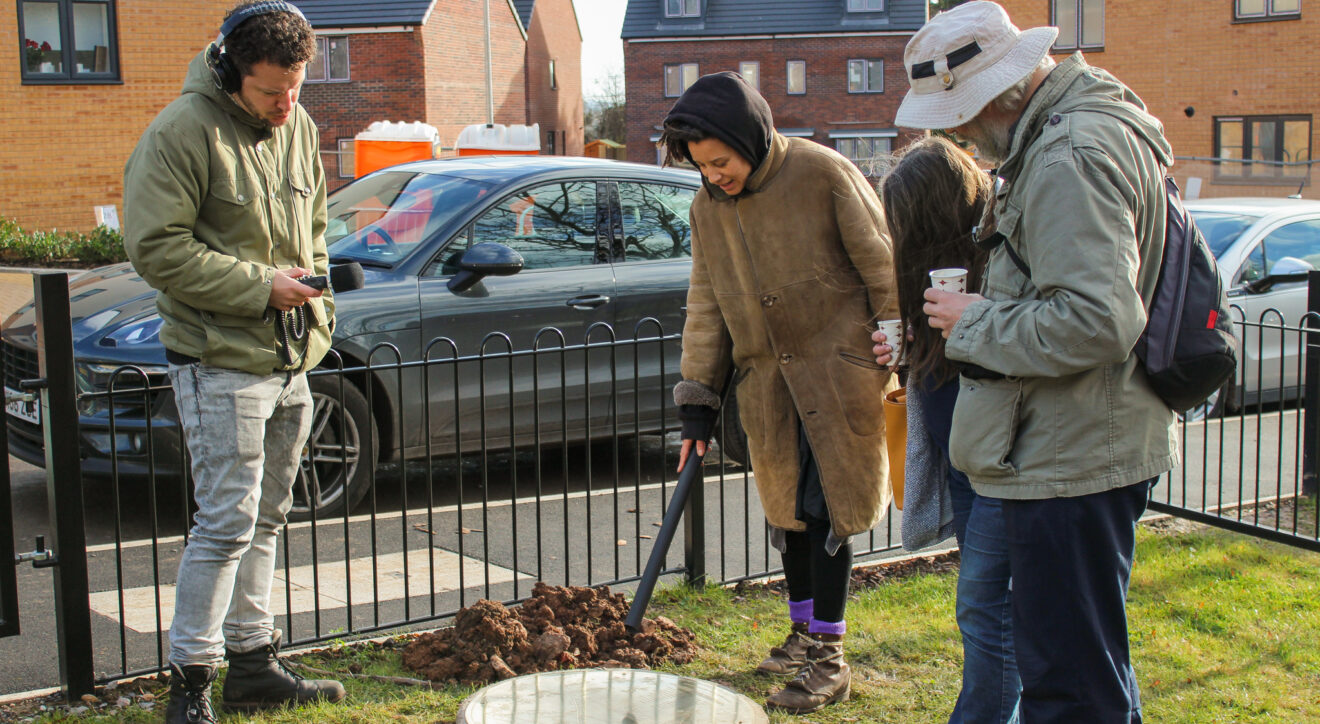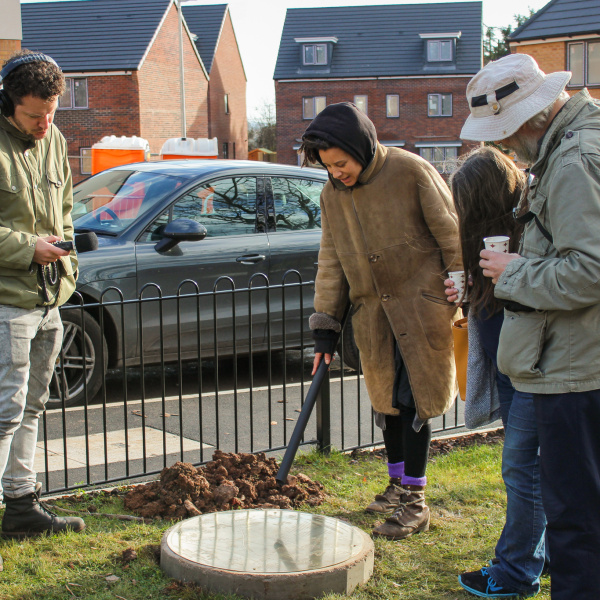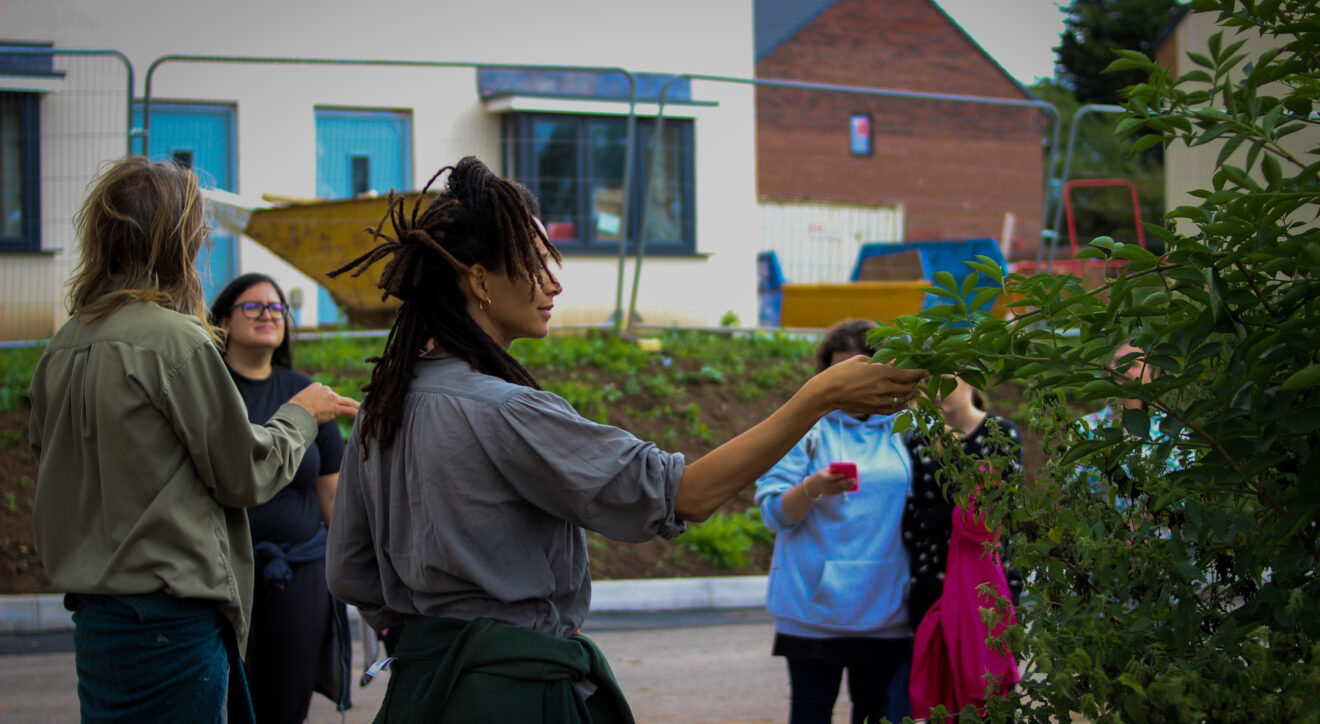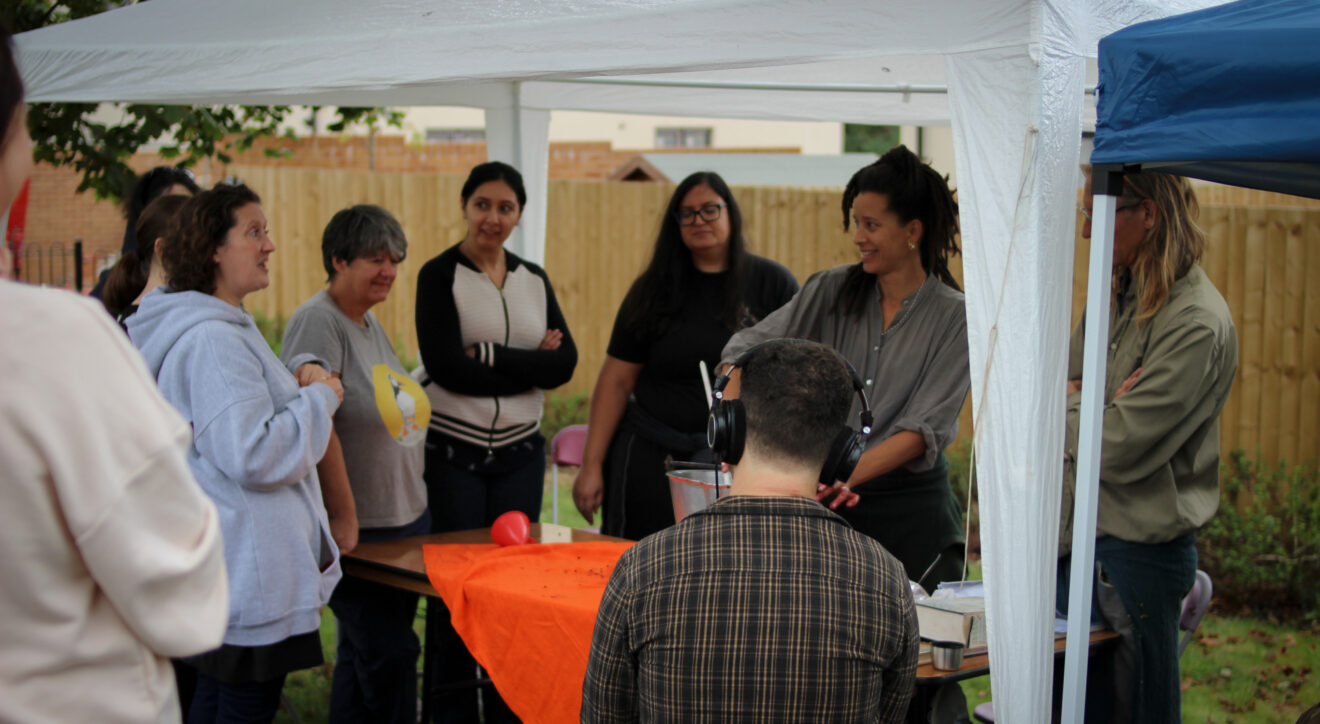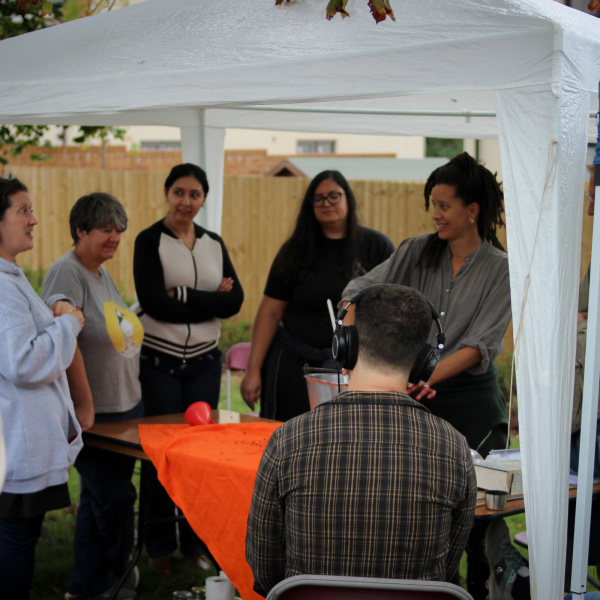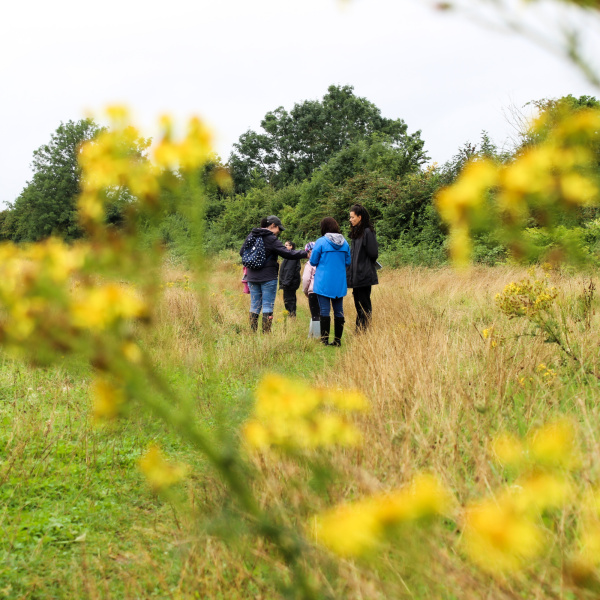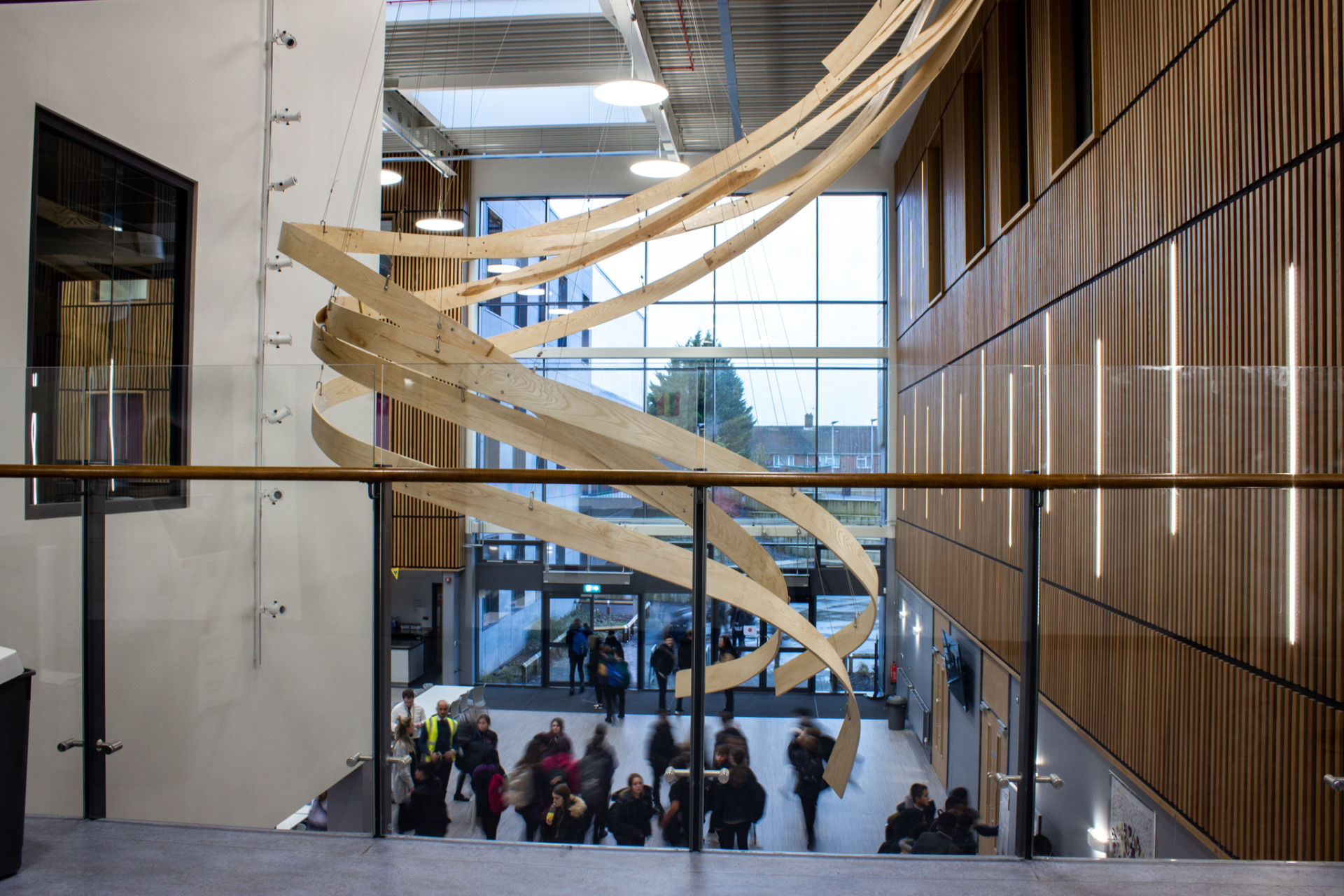
Synopsis
Home Sweet Home celebrates native food and medicinal plants that grow in and around the new community at Roseneath Gardens, Stoke Gifford.
In summer 2021, community workshops were held with artist Kayle Brandon and herbalist Christopher Roe, mapping native plants on and around the Roseneath community and interactively demonstrating medicinal and creative uses for them.
Kayle then created a bespoke permanent brass etching map, showing where these natural food resources could be found and their uses; which was installed in the new community park on the site.
Bricks delivered this programme with the local community, Clarion Housing, Engie and South Gloucestershire Council.
Description
Bricks delivered a public art programme for Roseneath Gardens, Stoke Gifford in South Gloucestershire; from Summer to Winter 2021.
This programme saw the creation of a new public artwork celebrating the native food and medicinal plants that grow in the community, through a series of free community workshops, to allow local residents to engage with the creation of the artwork and learn about the local environment and its resources.
Foraging Workshops and Neighbourhood Explorations
During summer and autumn of 2021 local residents and community groups joined artist Kayle Brandon and herbalist Christopher Roe on a series of neighbourhood creative explorations. Participants mapped the edible and medicinal plants living in the surrounding area and learned about their uses.
The workshops included:
- A foraging walk and food mapping of the local area and Roseneath Gardens site
- Elderberry foraging, medicinal syrup making, natural ink dying & cyanotype printing
These explorations and workshops influenced a new native edibles tree planting scheme for the site and the creation of a local food map, in the form of a brass plaque, which was placed in the new community park. Residents and visitors can take rubbings from the plaque to help them explore the native local food species for generations to come.
In winter 2021, native edible tree planting took place in the community park to bring more biodiversity to the area. A celebration event was also held to launch the food map – with an artist talk, a demonstration on how to use the brass etching for rubbings and apple juice/cider drinking!
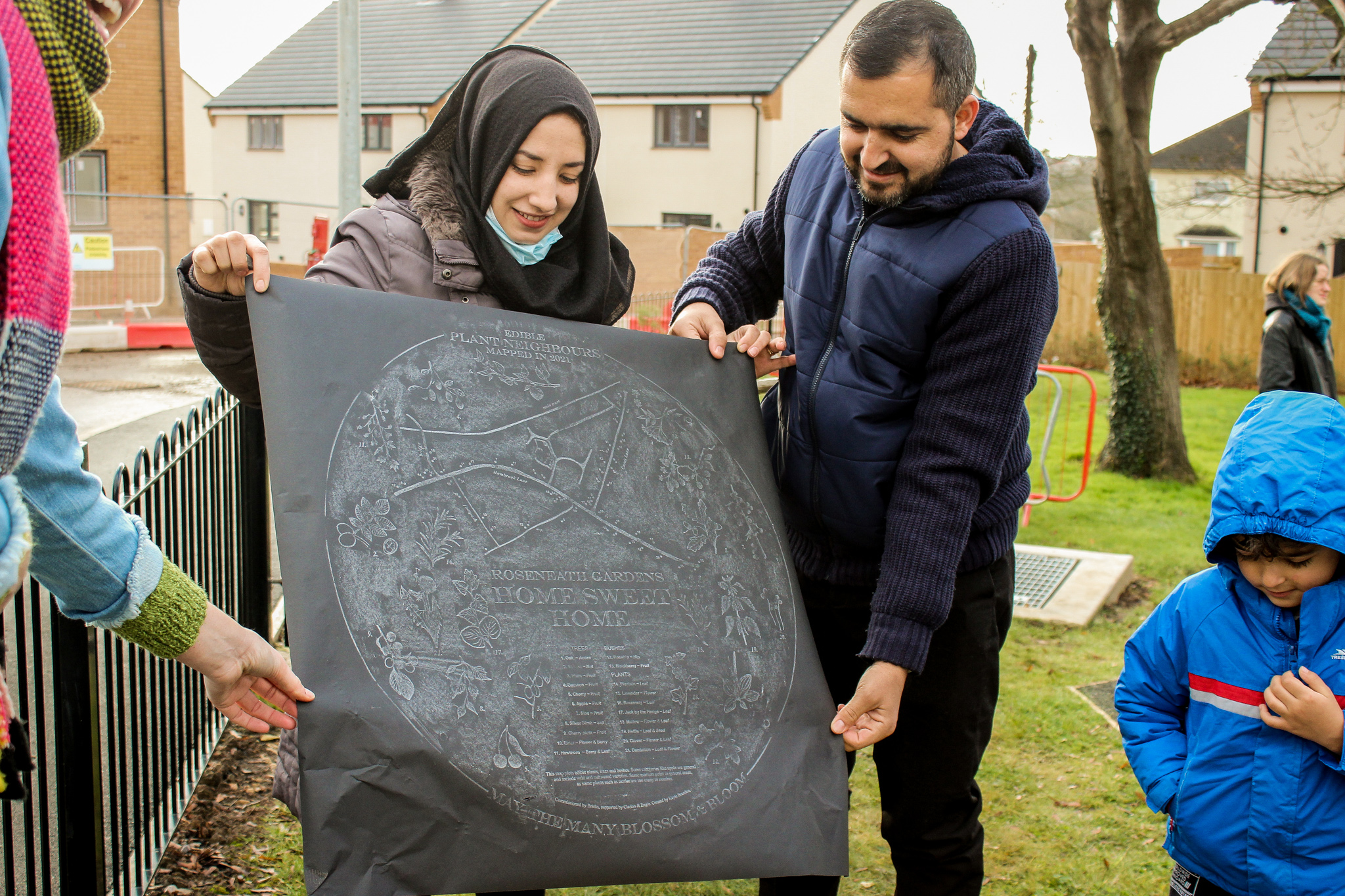
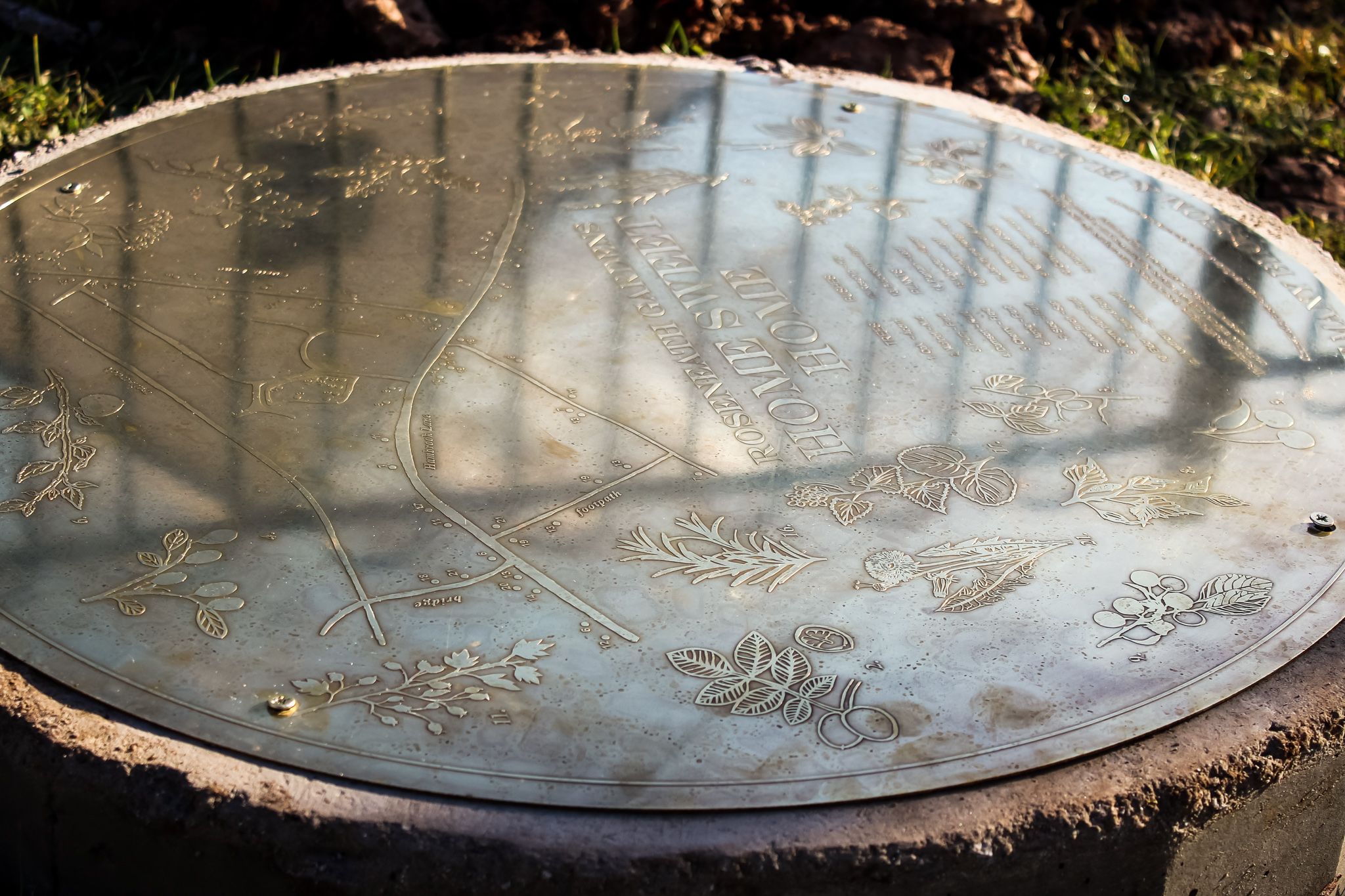
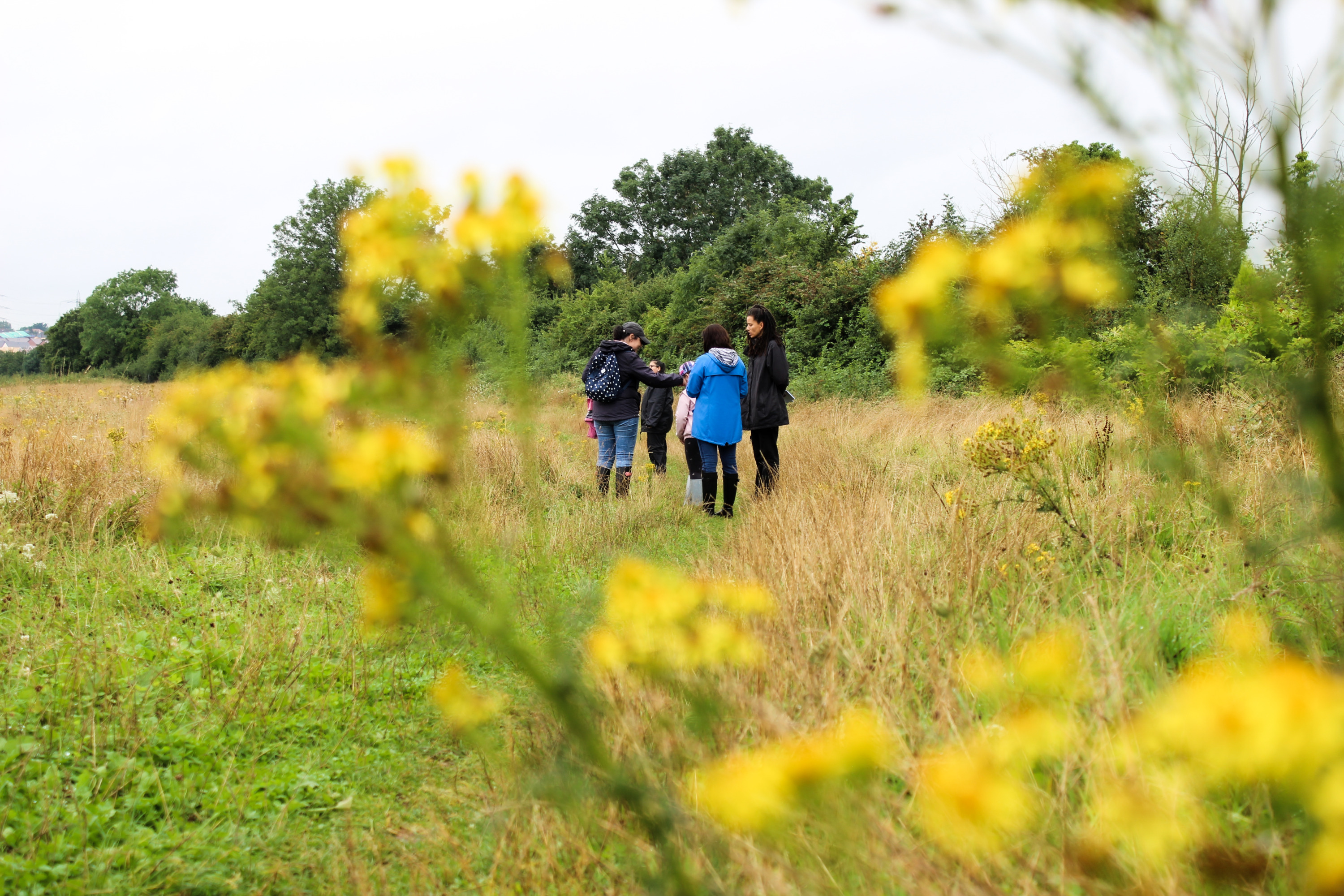
What kind of environment would you like to live in in the future? “I'd hope that there was more greenery around and.. that people could be in the environment where, like, it's not full of houses, and that it is somewhere almost to get away from like the every day, and it was just a bit more like calming."Lily (age 14), local resident and workshop attendee
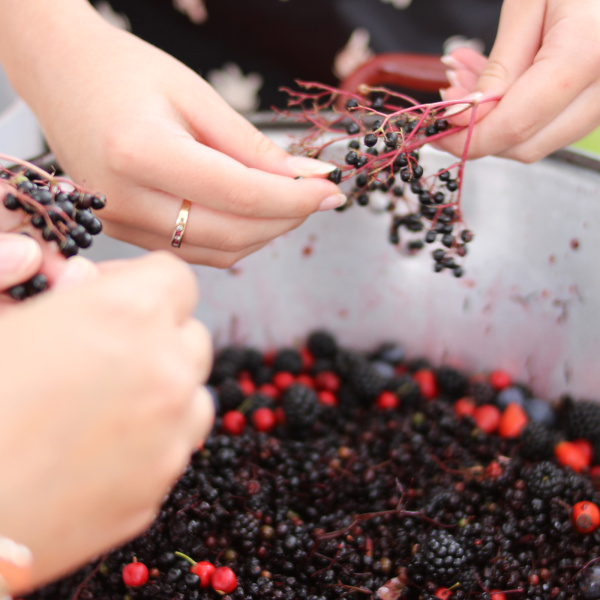
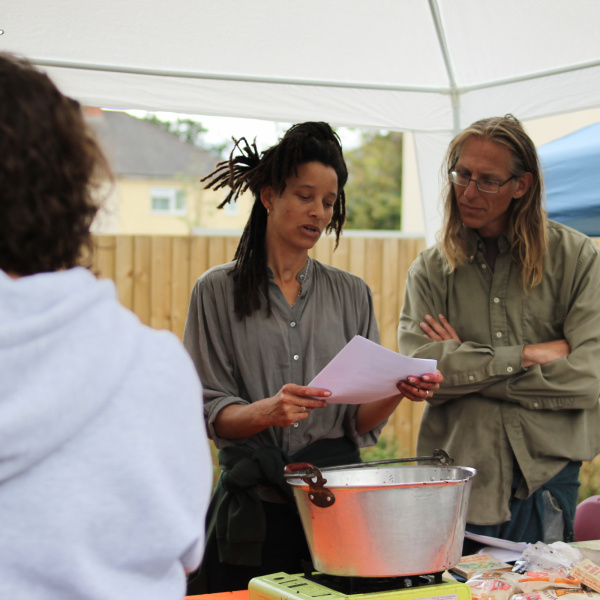
“With making the edible map of the Roseneath area, what was lovely was meeting the people who came and who were related to that place…to start those conversations, and to start inviting people to make more responses and works about it…you know, arts practice is a great space for it.”Kayle Brandon, Artist
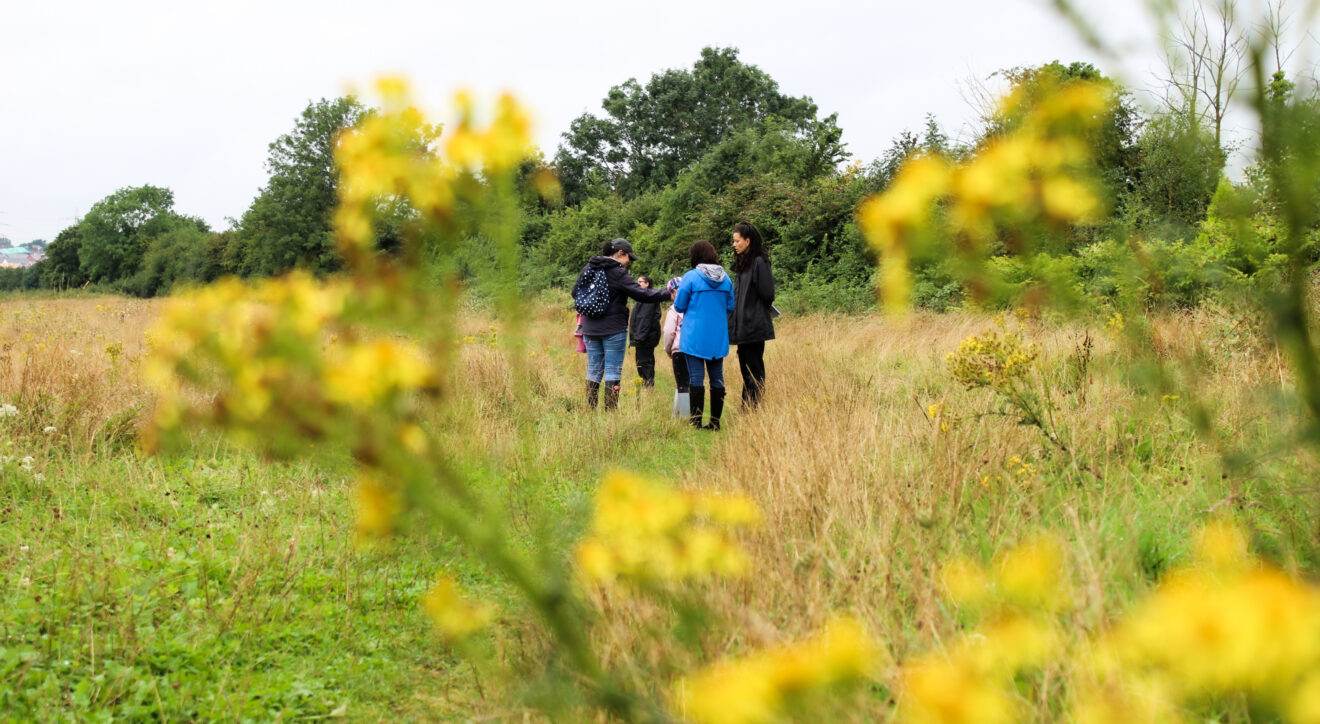
“We've got a huge amount of public open space (in developments) and we're designing things like community orchards into those spaces…having this kind of interpretation strategy (i.e. foraging)…(is) really quite a nice layer to add in to a development”Teresa Hazelwood, Landscape Designer for Roseneath Gardens
Further Reading:
Kayle Brandon is an interdisciplinary artist, who works within public and social contexts.
Making works which are embedded in specific sites, places and communities. Brandon is interested in the role of art within the everyday and works to engage audiences in several ways from intentional participation through to the incidental witness.
She regularly works in collaborative, collective scenarios, often merging art with activism. She has exhibited internationally and locally, appearing in shows at The Museum of Modern art in New York, and Spike Island, Bristol UK.
Her main areas of interest circle around peoples’ relationships to nature, urban space, animals, architecture and survival. Her work often involves physicality, intervention, and experimental exploration. She crosses into several disciplines; cartography, botany, anthropology and uses a variety of mediums; drawing, events, writing, sculptor, and craft.
Christopher Roe is a Bristol based herbalist with an apothecary at Grow Wilder Bristol.
Christopher studied at The Scottish School of Herbal medicine in Glasgow, a school which attempted to teach both the science and art of herbalism. “Although the modern laboratory biochemist may corroborate much ancient knowledge, it is observation and generations of clinical experience that forms the basis of how I use herbs”.
Hedgeroe Apothecary: https://hedgeroeapothecary.wixsite.com/herbalmedicine
Podcast Episode – Our Plant Neighbours, Roseneath Gardens – with Kayle Brandon
The podcast explores the development of a new work of Kayle’s in Stoke Gifford, Bristol, where she worked with local residents and herbalist Christopher Roe to produce an edible food mapping plaque.
The project explored the current abundance of local native food species surrounding the new neighbourhood, and captures a moment in time of natural space on the edge of future development.
Bricks Podcasts are a chance to listen into the individual worlds of artists and creatives. Commissioned by Bricks, the episodes delve into the practice and storytelling of unique topics.
Supported by Arts Council England and BCfm.
You can listen here: https://bricksbristol.org/2022/06/our-plants-neighbours-podcast-episode/
